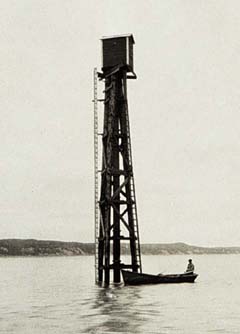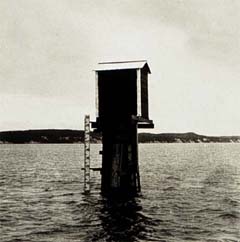Tides and Water Levels
What Affects Tides in Addition to the Sun and Moon?

The relative distances and positions of the sun, moon and Earth all affect the size and magnitude of the Earth’s two tidal bulges. At a smaller scale, the magnitude of tides can be strongly influenced by the shape of the shoreline. When oceanic tidal bulges hit wide continental margins, the height of the tides can be magnified. Conversely, mid-oceanic islands not near continental margins typically experience very small tides of 1 meter or less (Thurman, H.V., 1994).
The shape of bays and estuaries also can magnify the intensity of tides. Funnel-shaped bays in particular can dramatically alter tidal magnitude. The Bay of Fundy in Nova Scotia is the classic example of this effect, and has the highest tides in the world – over 15 meters (Thurman, H.V., 1994). Narrow inlets and shallow water also tend to dissipate incoming tides. Inland bays such as Laguna Madre, Texas, and Pamlico Sound, North Carolina, have areas classified as non-tidal even though they have ocean inlets. In estuaries with strong tidal rivers, such as the Delaware River and Columbia River, powerful seasonal river flows in the spring can severely alter or mask the incoming tide.
Local wind and weather patterns also can affect tides. Strong offshore winds can move water away from coastlines, exaggerating low tide exposures. Onshore winds may act to pile up water onto the shoreline, virtually eliminating low tide exposures. High – pressure systems can depress sea levels, leading to clear sunny days with exceptionally low tides. Conversely, low-pressure systems that contribute to cloudy, rainy conditions typically are associated with tides than are much higher than predicted.
Tides and Water Levels

